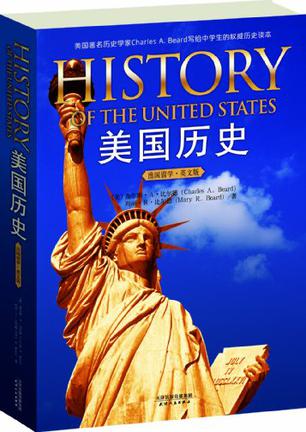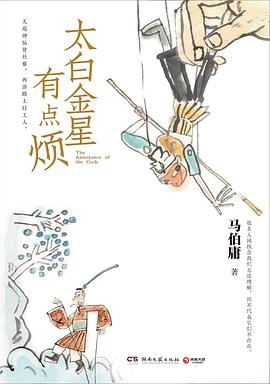美国历史

作者简介:
查尔斯•A•比尔德,美国著名历史学家,去世于1948年。他写作的《美国文明的兴起》一书,被商务印书馆翻译出版并选入“汉译名著”系列。 Charles Austin Beard (November 27, 1874—September 1, 1948) was an American historian. He published hundreds of monographs, textbooks and interpretive studies in both history and political science. His works included radical re-evaluation of the Founding Fathers of the United States, whom he believed were more motivated by economics than by philosophical principles。 Mary Ritter Beard (August 5, 1876—August 14, 1958) was an influential American historian and archivist , who played an important role in the women's suffrage movement and was a lifelong advocate for social justice through educational and activist roles in both the labor and woman's rights movements. She wrote several books on women's role in history including On Understanding Women (1931), America Through Women's Eyes (1933) and Woman As Force In History: A Study in Traditions and Realities (1946). In addition, she collaborated with her husband, eminent historian Charles Austin Beard on several distinguished works, most notably The Rise of American Civilization (1927)。
内容简介:
《美国历史(英文版)》继哈佛大学著名历史学家钱宁的《美国学生历史》(英汉双语版)出版问市后,受到众多读者欢迎,不少读者期望能买到英文原版关于美国历史的教材,《美国历史》正是为满足这部分读者纯英文阅读的需求。 这本全英文版的《美国历史》由美国著名历史学家比尔德编写,以西方人的视角,深入浅出地介绍了从殖民地时期到世界大战期间美国历史上的重大事件与文明发展。《美国历史》按不同历史时期,分知识点,一一讲述,便于理解记忆。为使读者更好地理解和掌握各章的重点和难点,每章末尾还附有练习题和思考题。文中还配有相应的插图,便于对不同地域和各个时期人物及事件有更直观感受。通过阅读《美国历史》,能理清美国历史发展脉络,获得对美国历史全景式认知,从而能更好地了解美国这个社会和文化多元的国家。 《美国历史(英文版)》适合高中以上读者阅读使用,对于备考SAT的学生应该很有帮助。全书提供配套英文朗读下载,在提升阅读水平的同时练习英文听力与口语。对于普通英语学习爱好者,也是一本很好的了解美国历史的学习读本。作者在前言中,对《美国历史》的特点作了如下介绍: It is not upon negative features, however, that we rest our case. It is rather upon constructive features. First. We have written a topical, not a narrative, history. We have tried to set forth the important aspects, problems, and movements of each period, bringing in the narrative rather by way of illustration. Second. We have emphasized those historical topics which help to explain how our nation has come to be what it is to-day. Third. We have dwelt fully upon the social and economic aspects of our history, especially in relation to the politics of each period. Fourth. We have treated the causes and results of wars, the problems of financing and sustaining armed forces, rather than military strategy. These are the subjects, which belong to a history for civilians. These are matters which civilians can understand—matters which they must understand, if they are to play well their part in war and peace. Fifth. By omitting the period of exploration, we have been able to enlarge the treatment of our own time. We have given special attention to the history of those current questions which must form the subject matter of sound instruction in citizenship. Sixth. We have borne in mind that America, with all her unique characteristics, is a part of a general civilization. Accordingly we have given diplomacy, foreign affairs, world relations, and the reciprocal influences of nations their appropriate place. Seventh. We have deliberately aimed at standards of maturity. The study of a mere narrative calls mainly for the use of the memory. We have aimed to stimulate habits of analysis, comparison, association, reflection, and generalization—habits calculated to enlarge as well as inform the mind. We have been at great pains to make our text clear, simple, and direct; but we have earnestly sought to stretch the intellects of our readers— to put them upon their mettle. Most of them will receive the last of their formal instruction in the high school. The world will soon expect maturity from them. Their achievements will depend upon the possession of other powers than memory alone. The effectiveness of their citizenship in our republic will be measured by the excellence of their judgment as well as the fullness of their information。
目录:
PART Ⅰ.THE COLONIAL PERIOD 1 THE GREAT MIGRATION TO AMERICA The Agencies of American Colonization The Colonial Peoples The Process of Colonization 2 COLONIAL AGRICULTURE, INDUSTRY, AND COMMERCE The Land and the Westward Movement Industrial and Commercial Development 3 SOCIAL AND POLITICAL PROGRESS The Leadership of the Churches Schools and Colleges The Colonial Press The Evolution in Political Institutions 4 THE DEVELOPMENT OF COLONIAL NATIONALISM Relations with the Indians and the French The Effects of Warfare on the Colonies Colonial Relations with the British Government Summary of the Colonial Period PART Ⅱ.CONFLICT AND INDEPENDENCE 5 THE NEW COURSE IN BRITISH IMPERIAL POLICY George Ⅲ and His System George Ⅲ's Ministers and Their Colonial Policies Colonial Resistance Forces Repeal Resumption of British Revenue and Commercial Policies Renewed Resistance in America Retaliation by the British Government From Reform to Revolution in America 6 THE AMERICAN REVOLUTION Resistance and Retaliation American Independence The Establishment of Government and the New Allegiance Military Affairs The Finances of the Revolution The Diplomacy of the Revolution Peace at Last Summary of the Revolutionary Period PART Ⅲ.FOUNDATIONS OF THE UNION AND NATIONAL POLITICS 7 THE FORMATION OF THE CONSTITUTION The Promise and the Difficulties of America The Calling of a Constitutional Convention The Framing of the Constitution The Struggle over Ratification 8 THE CLASH OF POLITICAL PARTIES The Men and Measures of the New Government The Rise of Political Parties Foreign Influences and Domestic Politics 9 THE JEFFERSONIAN REPUBLICANS IN POWER Republican Principles and Policies The Republicans and the Great West The Republican War for Commercial Independence The Republicans Nationalized The National Decisions of Chief Justice Marshall Summary of the Union and National Politics PART Ⅳ.THE WEST AND JACKSONIAN DEMOCRACY 10 THE FARMERS BEYOND THE APPALACHIANS Preparation for Western Settlement The Western Migration and New States The Spirit of the Frontier The West and the East Meet 11 JACKSONIAN DEMOCRACY The Democratic Movement in the East The New Democracy Enters the Arena The New Democracy at Washington The Rise of the Whigs The Interaction of American and European Opinion 12 THE MIDDLE BORDER AND THE GREAT WEST The Advance of the Middle Border On to the Pacific-Texas and the Mexican War The Pacific Coast and Utah Summary of Western Development and National Politics PART Ⅴ.SECTIONAL CONFLICT AND RECONSTRUCTION 13 THE RISE OF THE INDUSTRIAL SYSTEM The Industrial Revolution The Industrial Revolution and National Politics 14 THE PLANTING SYSTEM AND NATIONAL POLITICS Slavery-North and South Slavery in National Politics The Drift of Events toward the Irrepressible Conflict 15 THE CIVIL WAR AND RECONSTRUCTION The Southern Confederacy The War Measures of the Federal Government The Results of the Civil War Reconstruction in the South Summary of the Sectional Conflict PART Ⅵ.NATIONAL GROWTH AND WORLD POLITICS 16 THE POLITICAL AND ECONOMIC EVOLUTION OF THE SOUTH The South at the Close of the War The Restoration of White Supremacy The Economic Advance of the South 17 BUSINESS ENTERPRISE AND THE REPUBLICAN PARTY Railways and Industry The Supremacy of the Republican Party (1861-85) The Growth of Opposition to Republican Rule 18 THE DEVELOPMENT OF THE GREAT WEST The Railways As Trail Blazers The Evolution of Grazing and Agriculture Mining and Manufacturing in the West The Admission of New States The Influence of the Far West on National Life 19 DOMESTIC ISSUES BEFORE THE COUNTRY (1865-1897) The Currency Question The Protective Tariff and Taxation The Railways and Trusts The Minor Parties and Unrest The Sound Money Battle of 1896 Republican Measures and Results 20 AMERICA A WORLD POWER (1865-1900) American Foreign Relations (1865-98) Cuba and the Spanish War American Policies in the Philippines and the Orient Summary of National Growth and World Politics PART Ⅶ.PROGRESSIVE DEMOCRACY AND THE WORLD WAR 21 THE EVOLUTION OF REPUBLICAN POLICIES (1901-1913) Foreign Affairs Colonial Administration The Roosevelt Domestic Policies Legislative and Executive Activities The Administration of President Taft Progressive Insurgency and the Election of 1912 22 THE SPIRIT OF REFORM IN AMERICA An Age of Criticism Political Reforms Measures of Economic Reform 23 THE NEW POLITICAL DEMOCRACY The Rise of the Woman Movement The National Struggle for Woman Suffrage 24 INDUSTRIAL DEMOCRACY Cooperation between Employers and Employees The Rise and Growth of Organized Labor The Wider Relations of Organized Labor Immigration and Americanization 25 PRESIDENT WILSON AND THE WORLD WAR Domestic Legislation Colonial and Foreign Policies The United States and the European War The United States at War The Settlement at Paris Summary of Democracy and the World War




评论